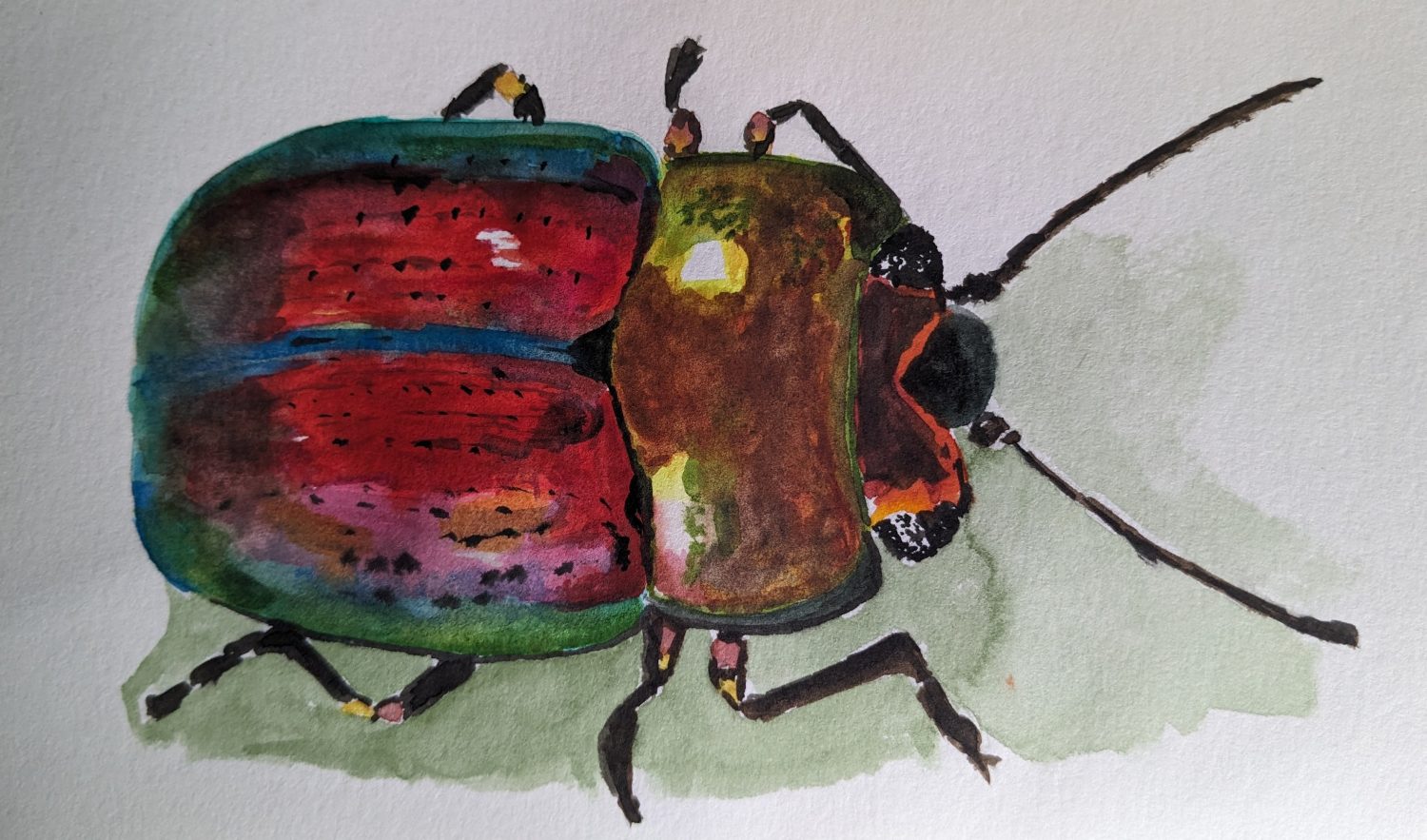
Gardening in the county has been a lesson in perseverance for me. I had some good gardens the first 10 years, but was busy with teaching and never put too much time into them. When I left teaching the garden got bigger. A lot bigger. Alas, he deer population had been increasing over time, leading to the natural solution (for them) to find more food in my garden. I struggled with them for a few years and finally raised the fence. The deer now forage elsewhere.
Then two years ago we lost the last of our dogs and a groundhog figured out how to get in. I have been known to curse them and chase them. Being an ecologist, I never actually hated them, just hated them getting in the garden. We were given lots of advice that boiled down to get a dog or get a gun. But what also happened without the dogs is that we were suddenly privy to seeing baby groundhogs, watchful groundhogs, groundhogs in trees, lots of groundhogs being groundhogs, They’re really cute. We started to fall in love. I don’t want to chase them away.
Long story short, I had a plan last March to keep the groundhogs out. It is a different plan that the O’Learys try in A Garden for a Groundhog by Lorna Balian (Abingdon Press, 1985). Since I’ve now fallen in love with groundhogs, I was interested in this book and I wasn’t disappointed. Balian does a great job building suspense for another garden season showing the O’Leary’s passing the winter waiting to garden again, eating LOTS of zucchini (gardeners will understand). Meanwhile the groundhog is also waiting, by hibernating, for that garden that always gets planted for him.
The illustrations are filled with creative details from the calendar changing to what’s cooking (some kind of zucchini dish) to the plants on the windowsill getting bigger. That’s just a few of the details. This book would be a lot of fun to explore with young readers and watch as they discover the differences each month as the family waits. I will not spoil it by telling what Mr. O’Leary’s solution was or if it worked.
My plan did work and I had the best garden ever. Of course, it also got a lot of attention because the pandemic did not allow travel. It’s a fact that what we give our attention to thrives. Just as relationships grow when we get to know each other. I’m glad I am getting to know the groundhogs of Halcyon.
I’ve included a poem I wrote about them – the sort of tangle of love-hate relationships. Sorry it’s not single-spaced. I can’t figure out how to change it. 🙂
Have You Seen Groundhog Feeding?
She comes out every evening.
We eat our dinner with a view,
of her eating hers,
two fluffy young by her side.
Have you seen how much they love clover?
Seeking it between the blades of grass.
We ooh and ah, and even laugh –
with them, not at them.
How they walk.
How they stand up high to ponder
danger or a benign noise.
We start to fall in love
until
a stolen butternut and missing beans
reminds us
we’re both hungry
and one of us
does not much care
for clover.





